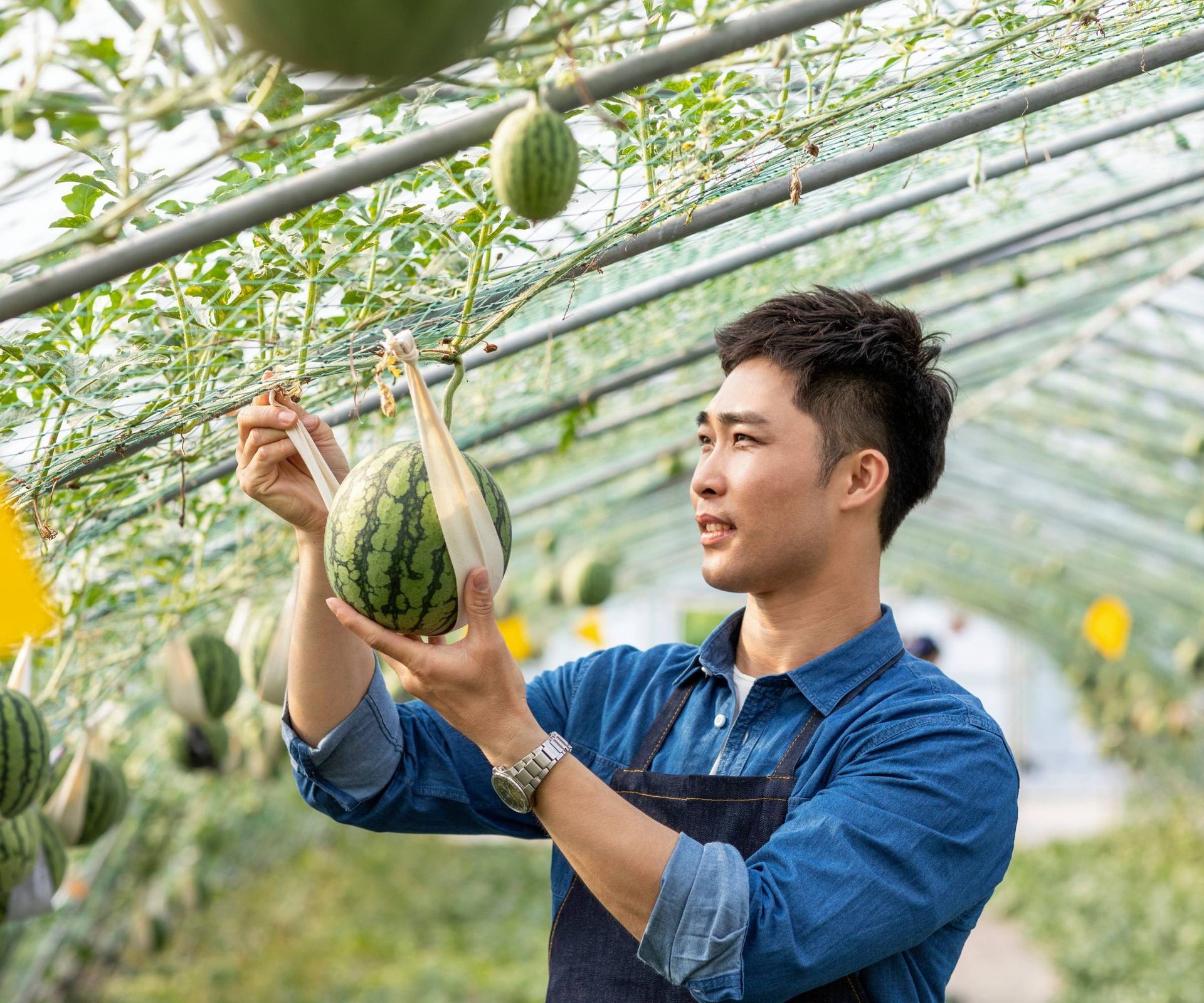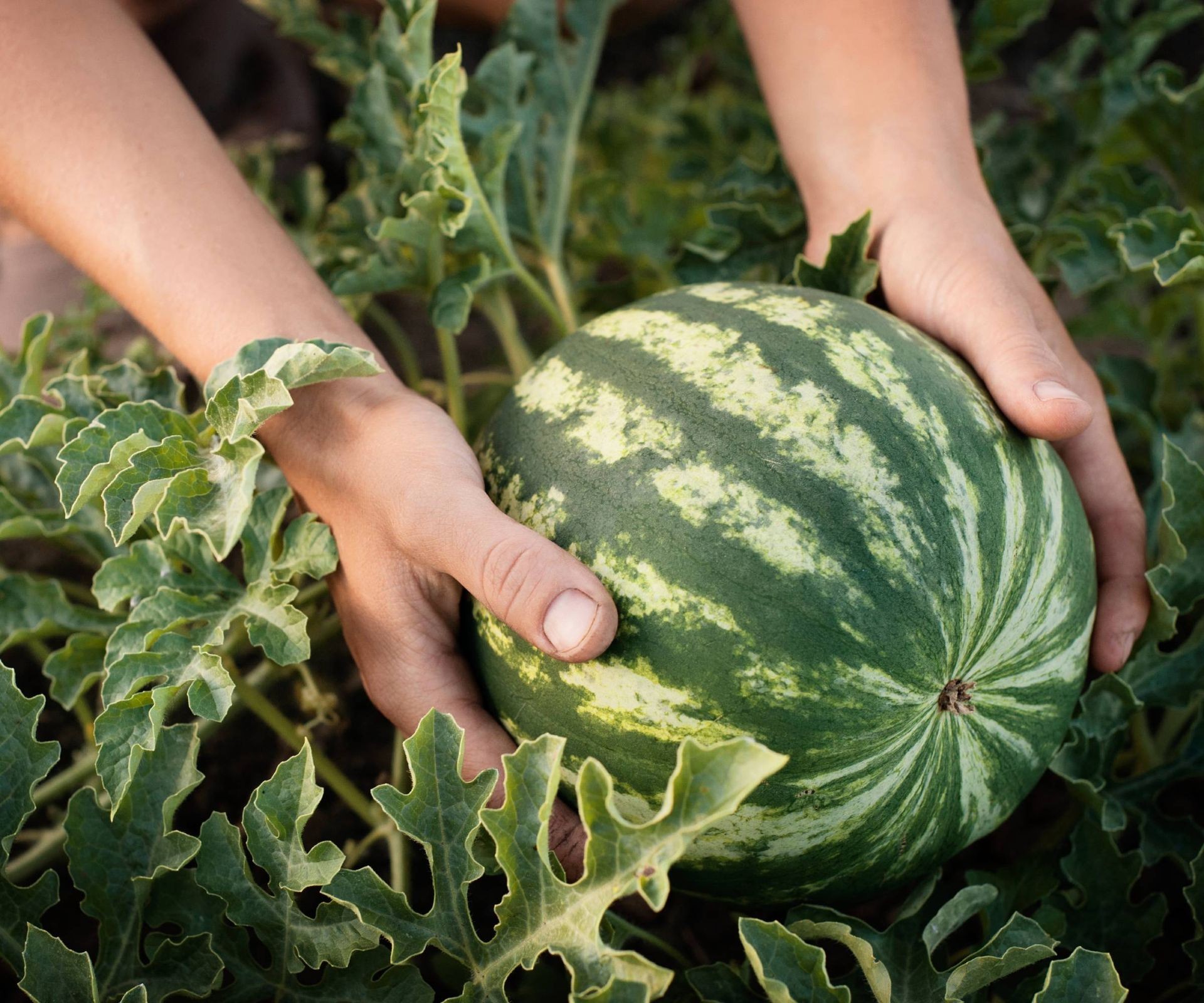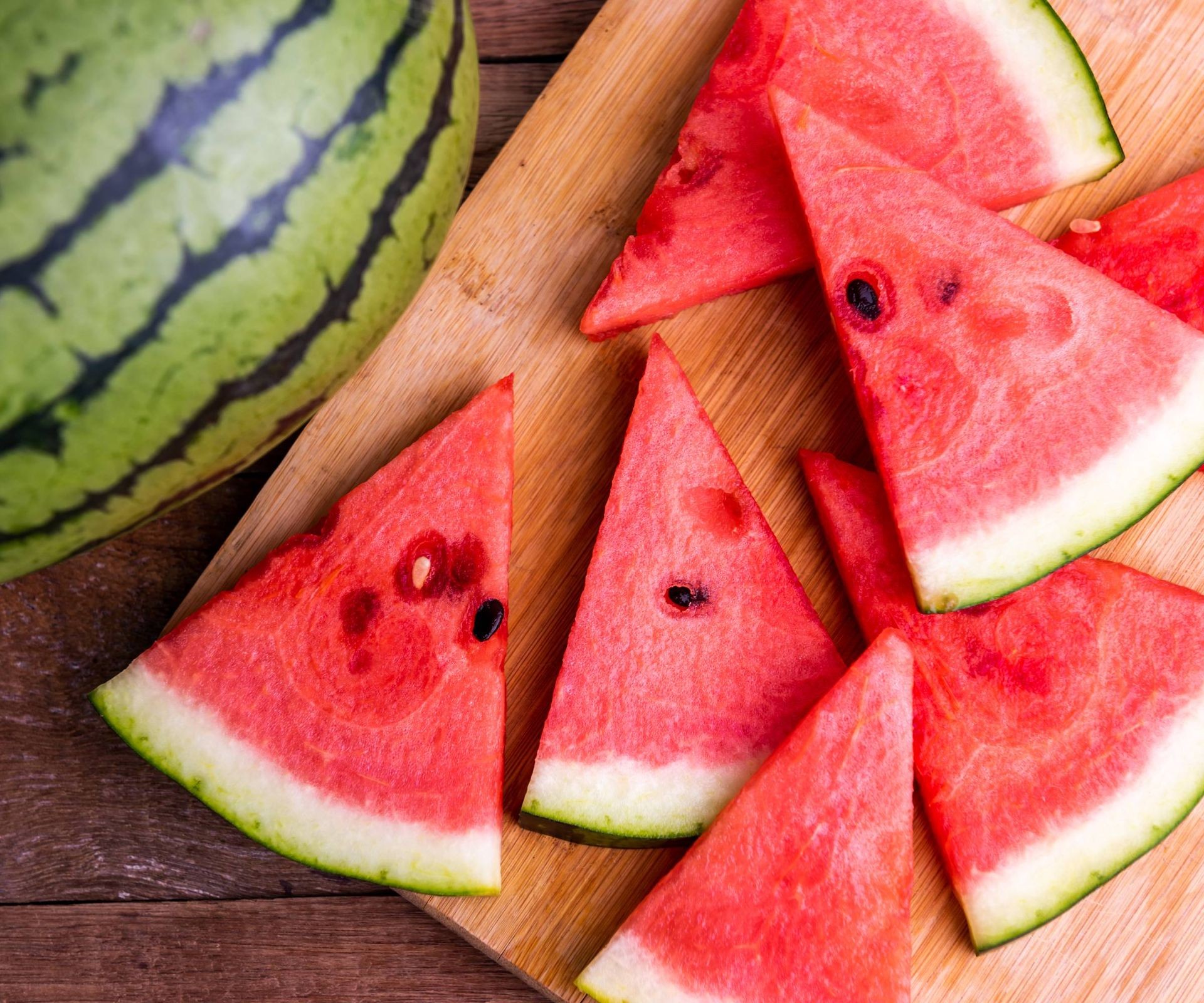No products in the cart.
NEWS
Your Guide to Growing Sweet, Juicy Watermelons at Home
Ah, watermelon! Just the sound of it brings to mind long summer days, picnics, and that incredibly refreshing sweetness. As someone who’s spent countless hours nurturing plants from tiny seeds to bountiful harvests, I can tell you that growing your own watermelon is one of the most rewarding gardening experiences there is. While these sprawling vines demand space and sunshine, they aren’t nearly as difficult to grow as you might think. With a little know-how and consistent care, you can absolutely cultivate your own delicious supply right in your backyard. Let’s dig in!
Getting Started: What Watermelons Need to Thrive
Watermelons (Botanical name: Citrullus lanatus) are true sun-lovers. They are heat-seeking annuals that flourish when given plenty of warmth, sunlight, and room to stretch out. Think of them as needing a sunny, warm beach day, every day!
Essential Requirements for Watermelon Success
To give your watermelon plants the best start and ensure a sweet, juicy harvest, focus on these core needs:
- Sun Exposure: Watermelons require a minimum of 8 to 10 hours of direct sunlight daily. Choose the sunniest spot in your garden!
- Soil Requirements: They crave well-draining soil. Soggy roots are a no-go. The ideal soil pH should be slightly acidic to neutral, typically between 6.0 and 7.0.
- Space: These are vining plants that spread across the ground. Give them ample space – they aren’t suited for small containers unless you choose compact varieties or use vertical trellising.
- Warmth: Watermelons love heat. Ensure both the air and soil temperatures are warm before planting. Soil temperature should ideally be around 65°F (18°C) or warmer.
Caring for Your Watermelon Plants: My Insider Tips
Once your watermelon plants are in the ground and growing, consistent care is key. It’s not complicated, but paying attention to the details makes all the difference between a few small fruits and a bumper crop.
Light: Fueling the Sweetness
As mentioned, sunlight is non-negotiable. Less than 8 hours of direct sun per day will result in poor growth, fewer flowers, and potentially underdeveloped or tasteless fruit. Position is everything when planning your patch!
Water: The Lifeblood of Juicy Fruit
Given how much delicious juice is packed inside, it’s no surprise that watermelons are thirsty plants. The soil needs to be kept consistently moist, especially when the vines are growing rapidly and when fruits are developing. Aim to keep the soil moist to a depth of about 6 inches (15 cm). Drip irrigation or watering at the base of the plant is ideal to avoid getting the foliage wet, which can help prevent fungal diseases. Avoid overhead watering, particularly in the evening.
 Man examines small watermelon growing vertically on a vine supported by a trellis
Man examines small watermelon growing vertically on a vine supported by a trellis
Temperature & Humidity: Finding the Sweet Spot
Watermelons thrive in warm conditions. They are very sensitive to frost and don’t grow well in cool temperatures. High humidity, while common in many growing regions, can be a challenge as it creates conditions ripe for mildew and other fungal issues. Good air circulation is important.
Soil: The Foundation for Growth
Well-draining soil is absolutely crucial. Waterlogged conditions can lead to root rot and other problems. If your soil is heavy clay, consider amending it generously with organic compost or planting in raised beds. Testing your soil pH is also a good idea to ensure it’s within the optimal 6.0 to 7.0 range. Incorporating plenty of good quality compost or well-rotted manure before planting provides a slow release of nutrients and improves soil structure.
Fertilizer: Feeding Your Crop
While good soil is the starting point, watermelon plants are heavy feeders, especially once they begin flowering and setting fruit. A soil test can tell you exactly what nutrients are needed. If you don’t test, a balanced fertilizer applied according to package directions as the vines start to run can be beneficial. Once flowering begins, switching to a fertilizer lower in nitrogen and higher in phosphorus and potassium can encourage fruit development. As our Biogarden.asia soil health experts often recommend, “Feeding the soil with organic matter lays the groundwork, but a targeted nutrient boost at the right stage makes all the difference for maximizing yield and flavor.”
Pests & Diseases: Staying Vigilant
Like many garden plants, watermelons can encounter pests and diseases. Cucumber beetles and aphids are common insect pests. Keeping an eye on your plants daily helps catch problems early. Diseases like powdery mildew and various wilts can also affect watermelon vines, especially in humid conditions. Planting resistant varieties and ensuring good air circulation can help. Unfortunately, larger visitors like deer are also attracted to the tender vines and fruits, so protective fencing might be necessary in some areas.
Planting Your Watermelon Patch
Getting the seeds or seedlings into the ground correctly sets the stage for healthy growth. You have a couple of options depending on your climate and how early you want to harvest.
You can start watermelon seeds indoors about 3-4 weeks before your last expected spring frost. This gives them a head start, especially in regions with shorter growing seasons. Use biodegradable pots to minimize transplant shock, as watermelon roots don’t like being disturbed.
Alternatively, and in warmer climates, you can sow seeds directly into your garden beds once the soil is warm enough (remember, 65°F/18°C is the target). Plant seeds in “hills” – slightly mounded areas of soil. This helps with drainage and allows the soil to warm up faster. Plant 3-5 seeds per hill, about 1 inch (2.5 cm) deep.
Watermelon vines need significant space to spread out. Plant hills about 6 feet (around 1.8 meters) apart, with rows spaced 8-10 feet (around 2.4-3 meters) apart. Trust me, they will fill this space! Using black plastic mulch over the planting area can help warm the soil before planting and suppress weeds throughout the season.
Once your seedlings are established and have a few true leaves, thin them to the strongest 2-3 plants per hill. If you’re growing seedless varieties, you’ll need to plant a seeded variety nearby (usually every third row or so) for pollination, as seedless types require pollen from seeded ones to produce fruit.
 A woman kneels among lush green watermelon vines, gently examining a growing fruit
A woman kneels among lush green watermelon vines, gently examining a growing fruit
Harvesting That Sweet Reward
This is the moment you’ve been waiting for! Knowing when a watermelon is perfectly ripe can be a bit tricky, but there are several reliable signs. Maturity time varies by variety, generally taking between 70 and 90 days from planting, or about 35-45 days after you see the first female flowers get pollinated and start forming tiny fruits.
Here are the classic indicators of a ripe watermelon:
- The Tendril Test: Look at the small, curly tendril on the vine closest to where the fruit stem attaches. When this tendril turns brown and dries up, the melon is usually ripe. Note: Not all tendrils on the vine indicate ripeness, only the one directly opposite the fruit’s stem.
- The Ground Spot: The spot where the melon rests on the ground changes color. It should change from white or pale green to a rich, creamy yellow. This is often the most reliable visual cue.
- The Thump Test: Gently tap the melon with your knuckles. A ripe watermelon should produce a deep, hollow sound, like tapping on your chest. An unripe one will sound higher-pitched, and an overripe one will sound dull.
- The Rind: The rind should look dull, not shiny. The skin will also become hard enough that you can’t easily pierce it with your fingernail.
Harvest by cutting the stem cleanly with a knife or pruners, leaving a few inches of stem attached to the fruit.
Storing Your Harvest
Once harvested, a whole, uncut watermelon can be stored for a couple of weeks in a cool, dark place, ideally around 45°F (7°C). Once cut, wrap the pieces and refrigerate, where they’ll stay good for a few days.
 Brightly colored watermelon slices on a cutting board next to a whole melon
Brightly colored watermelon slices on a cutting board next to a whole melon
Exploring Watermelon Varieties
The world of watermelons is much larger than just the standard red-fleshed, green-striped giants you see in supermarkets! There are hundreds of varieties offering different sizes, shapes, colors (from red to pink, orange, and yellow), and flavors.
If you’re aiming for massive fruits, look for varieties like ‘Carolina Cross’ or ‘Crimson Sweet’. For earlier harvests or smaller spaces (relatively speaking!), ‘Sugar Baby’ (a classic icebox type) or ‘Bush Sugar Baby’ are excellent choices. Yellow-fleshed varieties like ‘Yellow Baby’ or ‘Golden Midget’ offer a delightful surprise inside. Seedless types are popular for convenience but require a seeded pollinator planted nearby. Choosing the right variety for your climate and goals is part of the fun!
Frequently Asked Watermelon Questions
Based on my interactions with fellow gardeners, here are a couple of questions that often come up:
How long does it typically take to grow a watermelon?
From sowing seeds (either indoors or directly outside) to harvest, you’re generally looking at a timeframe of 70 to 90 days, depending on the variety and growing conditions. Starting seeds indoors can shave off a few weeks from this timeframe.
Do watermelon plants really need full sun?
Absolutely! This is non-negotiable for successful watermelon growth and fruit production. They need a minimum of 8 hours, but ideally 10+ hours, of direct sunlight each day to produce sweet, ripe fruit. Anything less will significantly impact yield and flavor.
Growing watermelons is a truly rewarding experience that culminates in the sweet taste of your own homegrown summer treat. With the right preparation, consistent care, and a sunny spot, you’ll be enjoying juicy slices in no time! Explore our range of gardening supplies at Biogarden.asia to support your watermelon-growing journey. Happy planting!



